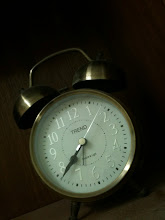Yesterday was a gloomy day - literally. After nearly 5 hours of quarantine, soon the sky became gloomy and there were lightnings and thunders for approximately 30 minutes before the rain poured. And it suited my mood as well, after doing quite terribly in the OSCE Day 2. I was so silly that I missed to ask patient's name and RN before I perform venopuncture for blood test. And I made a mistake that could not be forgiven - defibrillation for unconscious patient with pulseless electrical activity (PEA) at the Accident and Emergency department (A&E) CPR station! I've cried enough for the spilled milk (terrible performance in OSCE). Hopefully I managed to secure at least minimum pass for OSCE and other components. I must focus on the upcoming rest of the clinical component i.e. long case and short cases.
OSCE Day 2
Station 1: Primary Care Medicine. Patient presented with urethral discharge and back ache for 3 days. Obtain the sexual history and advise the patient accordingly.
Station 2: Rest Station
Station 3: Otorhinolaryngology (ENT). Two exhibits. First, acute tonsilitis - we were asked about the clinical findings based on McIsaac score. Then we were asked about the first line antibiotics and duration of treatment. Second exhibit showed picture of ear toileting. Questions, what's the indications, precaution, and complications of the procedure?
Station 4: Anaesthesiology. Patient presented with trauma due to MVA. Suddenly developed respiratory difficulty. We were given arterial blood gases (ABG) results and had to interpret. Then followed by the management of the patient (ATLS - primary survey). After intubation and ventilation, another set of ABG results given for interpretation. Lastly, patient was put under FiO2 0.8. What does this indicates?
Station 5: Emergency Medicine. There's video showing patient with signs of paradoxical breathing. Asked about the diagnosis and further management of this patient.
Station 6: Otorhinolaryngology (ENT). Two exhibits. First: Inflammed inferior turbinate and it's management (medical and surgical). Second: Cholesteatoma, the complications, and whether the hearing loss secondary to it is reversible or not.
Station 7: Rest Station
Station 8: Anaesthesiology. Venopuncture for full blood count and renal profile. (Missed a lot of marks here. Silly mistakes, should have scored full mark!)
Station 9: Obstetrics and Gynaecology (O&G). Running commentary on how to prepare for episiotomy repair and demonstrate on how to do the suturing.
Station 10: Emergency Medicine. CPR and then given an ECG. What's further management? (Follow the algorithm). If VF or pulseless VT, defibrillate. If otherwise PEA or asystole, continue CPR and at the same time ask for assistant to give IV adrenaline 1ml. (I failed miserably despite practicing it so many times).
OSCE Day 2
Station 1: Primary Care Medicine. Patient presented with urethral discharge and back ache for 3 days. Obtain the sexual history and advise the patient accordingly.
Station 2: Rest Station
Station 3: Otorhinolaryngology (ENT). Two exhibits. First, acute tonsilitis - we were asked about the clinical findings based on McIsaac score. Then we were asked about the first line antibiotics and duration of treatment. Second exhibit showed picture of ear toileting. Questions, what's the indications, precaution, and complications of the procedure?
Station 4: Anaesthesiology. Patient presented with trauma due to MVA. Suddenly developed respiratory difficulty. We were given arterial blood gases (ABG) results and had to interpret. Then followed by the management of the patient (ATLS - primary survey). After intubation and ventilation, another set of ABG results given for interpretation. Lastly, patient was put under FiO2 0.8. What does this indicates?
Station 5: Emergency Medicine. There's video showing patient with signs of paradoxical breathing. Asked about the diagnosis and further management of this patient.
Station 6: Otorhinolaryngology (ENT). Two exhibits. First: Inflammed inferior turbinate and it's management (medical and surgical). Second: Cholesteatoma, the complications, and whether the hearing loss secondary to it is reversible or not.
Station 7: Rest Station
Station 8: Anaesthesiology. Venopuncture for full blood count and renal profile. (Missed a lot of marks here. Silly mistakes, should have scored full mark!)
Station 9: Obstetrics and Gynaecology (O&G). Running commentary on how to prepare for episiotomy repair and demonstrate on how to do the suturing.
Station 10: Emergency Medicine. CPR and then given an ECG. What's further management? (Follow the algorithm). If VF or pulseless VT, defibrillate. If otherwise PEA or asystole, continue CPR and at the same time ask for assistant to give IV adrenaline 1ml. (I failed miserably despite practicing it so many times).
==========
Ok, now let's get back to business. Should revise more on managements of common diseases - starting from O&G first for tonight. But first I want to have some hearty meals for dinner... =)





No comments:
Post a Comment